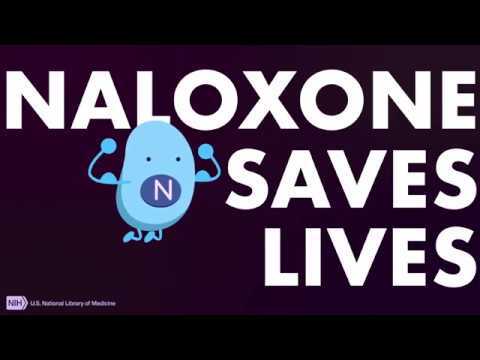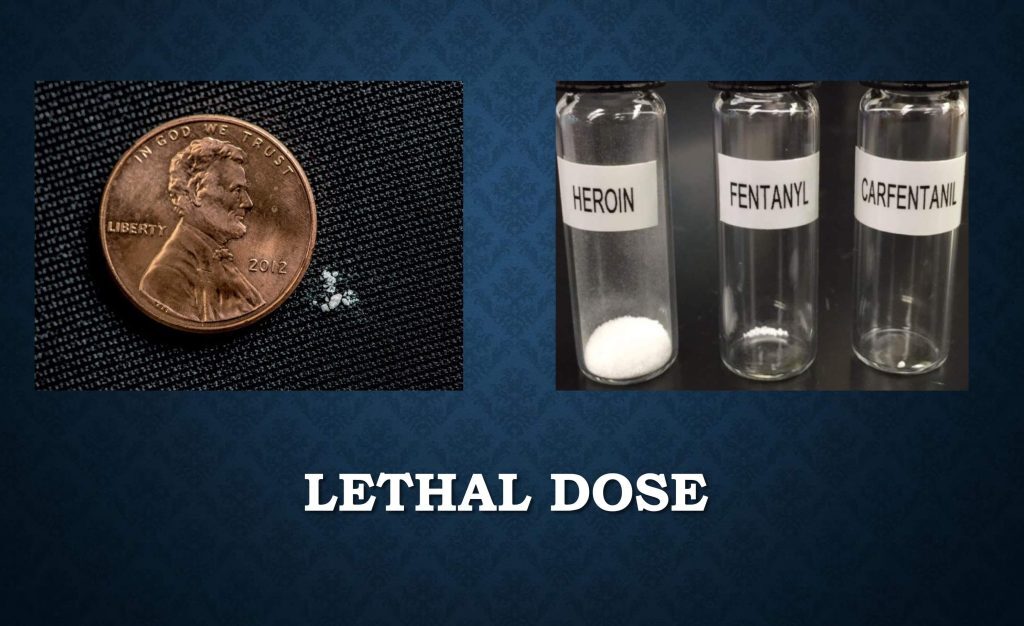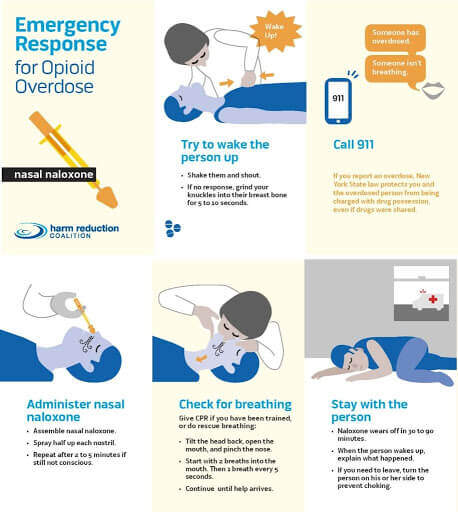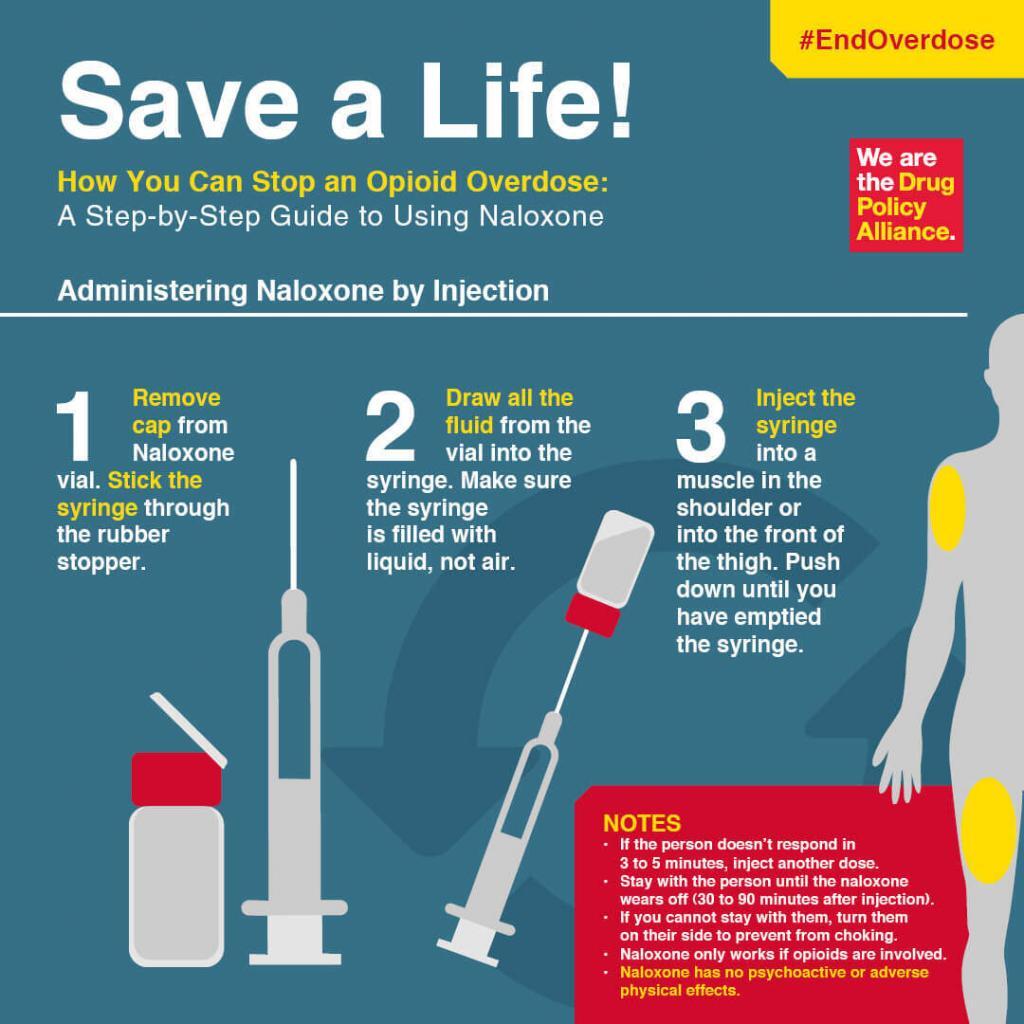
Drug overdose is now the leading cause of death for people aged 18 to 45 in the US, overtaking suicide. According to the Centers for Disease Control and Prevention, “fentanyl killed nearly twice as many people as COVID, car accidents, cancer, and suicide in 2021“. This is quite an alarming development. To my mind, it doesn’t get talked about nearly as much as it should. If you take a look at the following photo, it’s not hard to understand why accidental overdoses are so common.
A Lethal Dose Of Heroin, Fentanyl, And Carfentanyl

Unscrupulous drug dealers often “cut” their product with fentanyl in order to increase its potency and demand. This is more common with harder drugs, like heroin and cocaine, but there have also been reports of it happening with softer drugs, like cannabis (drugs laced with fentanyl). Today, it’s easier to get poisoned, or to die by an accidental overdose, than ever before.
Fortunately, there is a drug that can reverse the effects of opioid overdose within minutes. You may have heard of “Narcan.” Narcan is the brand name of a drug containing naloxone. Oftentimes, naloxone is referred to as “Narcan,” much like we would call a tissue a “Kleenex,” or a copy machine a “Xerox machine,” even if it was from another brand. Naloxone comes in two applications: intranasal and intramuscular. One of them you inject in the nose. The other you inject into a large muscle like the thigh.
Naloxone only works on overdoses caused by opioids. This family of drugs includes prescription painkillers like OxyContin, fentanyl, methadone, and Vicodin, as well as street drugs like heroin. Naloxone will not reverse overdose resulting from non-opioid drugs, like cocaine, benzodiazepines (“benzos”), or alcohol.
National Training And Technical Assistance Center (link)
I believe a lot more people should possess naloxone, and have a basic literacy about when and how to apply, even in areas where drug abuse is not common. We never know when someone’s life will depend on our level of preparedness, and willingness to be a Good Samaritan. At my local CVS here in the US, naloxone can be purchased without a prescription. You can research its availability near you.
Today, I’ve transcribed a YouTube clip, created by the National Institute On Drug Abuse (NIDA) and The National Institutes Of Health (NIH), that gives a good overview of the who, what, where, when, and why of naloxone.
I have also included two graphs on how to administer naloxone, both the intranasal and intramuscular applications. You can check those out below the transcript!
Once you are up to speed, consider sharing this information with others.
From 1996 to 2014, at least 26,500 opioid overdoses in the United States were reversed by laypersons using naloxone.
National Institute On Drug Abuse
How Naloxone Saves Lives in Opioid Overdose
Naloxone saves lives. No time to sit idly by. More and more people are dying of overdose from the likes of heroin, fentanyl, and prescription pain medications, like Oxycodone and Hydrocodone. These are examples of opioids. Opioids are drugs derived from the opium poppy plant, or made in the lab. They can treat pain, cough, and diarrhea, but opioids can also be addictive, and even deadly.
The number of opioid overdose deaths has escalated more than 400% since the turn of the century, with tens of thousands of lives now being lost every year. But many deaths can be prevented with a life-saving treatment, naloxone.
When given right away, naloxone can work in minutes to reverse an overdose. Naloxone is safe, has few side effects, and some forms can be administered by friends and family.
When is naloxone used?
First, recognize signs of overdose. Limb body, pale, clammy face, blue fingernails or lips, vomiting or gurgling sounds, inability to speak or be awakened, slow breathing or heartbeat. If you see these symptoms, call 911 immediately, and consider the use of naloxone, if available.
How is naloxone given?
Home preparations include a nasal spray given to someone while they lie on their back, or a device that automatically injects medicine into the thigh. Sometimes, more than one dose is needed.
The person’s breathing also needs to be monitored. If the person stops breathing, consider rescue breaths and CPR, if you are trained, until first responders arrive.
How does naloxone work?
Naloxone is an opioid antagonist, which means that it blocks opioid receptors from being activated. It is so strongly attracted to the receptors that it knocks other opioids off. When opioids are sitting on the receptors, they change the activity of the cell. Opioid receptors are found on nerve cells all around the body. In the brain, opioids produce feelings of comfort and sleepiness. In the brain stem, opioids relax breathing and reduce cough. In the spinal cord and peripheral nerves, opioids slow down pain signals. In the gastrointestinal tract, opioids are constipating.
These opioids actions can be helpful. The body actually produces its own opioids called endorphins, which help calm the body in times of stress. Endorphins help produce the runner’s high that helps marathon runners get through grueling races. But opioid drugs, like prescription pain medications, or heroin, have much stronger opioids effects. And they’re more dangerous. Over time, frequent opioid use makes the body dependent on the drugs. When the opioids are taken away, the body reacts with withdrawal symptoms, such as headache, racing heart, soaking sweats, vomiting, diarrhea, and tremors. For many, the symptoms feel unbearable.
With continued use, opioid receptors also become less responsive, and the body develops tolerance to the drugs. More drugs are needed to produce the same effects, which makes overdose more likely. Overdose is dangerous, especially for its effect in the brain stem, relaxing breathing. Breathing can be relaxed so much that it stops, leading to death.
Naloxone knocks opioids off their receptors all around the body. In the brain stem, naloxone can restore the drive to breathe and save a life. But even if naloxone is successful, opioids are still floating around, so expert medical care should be sought as soon as possible. Naloxone works for 30-90 minutes before the opioids return to their receptors. Naloxone may promote withdrawal because it knocks opioids off the receptors so quickly, but otherwise, naloxone is safe and unlikely to produce side effects.
Naloxone saves lives. From 1996 to 2014, at least 26,500 opioid overdoses in the United States were reversed by laypersons using naloxone. While naloxone is a potentially life-saving treatment, more needs to be done to solve the opioid overdose epidemic. The National Institutes of Health launched “The Heal Initiative” in 2018, expanding research across multiple NIH institutes and centers to speed scientific solutions to the national opioid crisis. Research is underway to improve treatments for opioid misuse and addiction, and to enhance pain management.
The National Institute On Drug Abuse, or NIDA, is a leading NIH institute for research on opioid misuse and addiction, and its support helped the development of the user-friendly naloxone nasal spray.
For more information, see NIDA’s website at drugabuse.gov and search “naloxone.” Or visit nih.gov and search “NIH Heal Initiative.”
General opioid information can also be found at medlineplus.gov This video was produced by MedlinePlus, a trusted source of health information from the National Library of Medicine.


For more, see the complete archive of articles on integrity.

